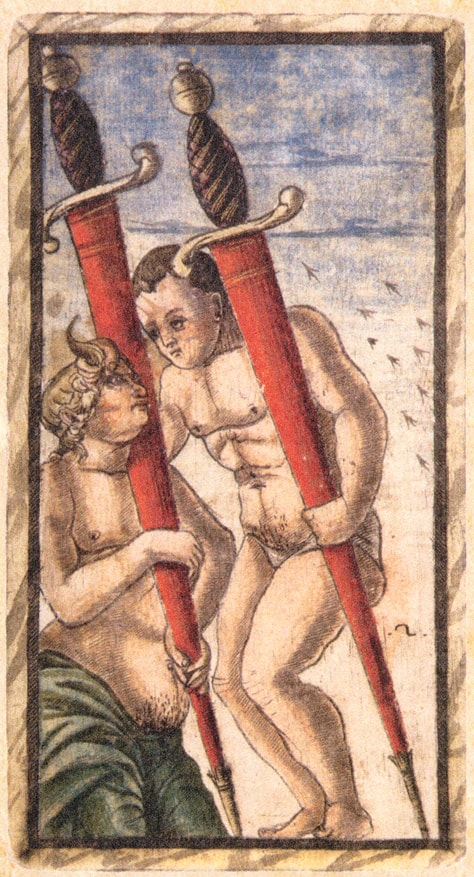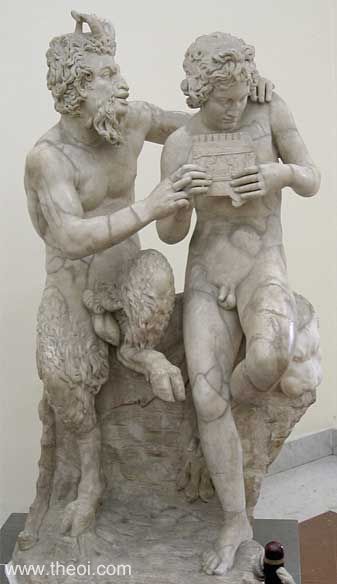Hi Nora,
playing card matters after 1850 are very rare here.
If mythology in connection to Tarot is your interest, then a very early deck (probably early 1420s) should have your favour. Filippo Maria Visconti was the commissioner, Michelino da Besozzo painted it, Martiano da Tortona wrote a description (and possibly developed the design) and it was reported in the biography of F.M.Visconti by Pier Candid Decembrio.
In modern times Franco Pratesi rediscovered it in earlier reports (1989/1990) in the IPCS-magazine (4-6 editions in a year since 1972 for members of the International Playing Card Society) .....
THE EARLIEST TAROT PACK KNOWN, by Franco Pratesi, 1989
(The Playing-Card, Vol. XVIII, No. 1 and 2, pp. 28-38) 10. Italian Cards - New Discoveries
http://trionfi.com/earliest-tarot-pack
Early internet was occasionally a little bit chaotic. There were newsgroups, not moderated, with a lot of open conflicts. Then email-lists were generated, moderated and with conflicts between moderators and members. Finally there were forums with moderators. Then forums developed, which needed not much moderation
In the still chaotic internet of 2002 the condition existed, that the content of Franco Pratesi's article was presented only in a relative short article of another author. I have written the link of this article and the name of the author somewhere, but I've lost it for this moment. It was recognizable, that this was something of importance, so the person Franco Pratesi was searched and finally found in some activities of an Italian Go-players email-list.
Franco was very friendly and gave us access of some of his articles about playing cards, with a lot of material, which was published in the IPCS material, but didn't make it in the books of Kaplan and Dummett. Franco, however, had gained the interest in the history of the Go game and had finished his playing card research then. For a period only ... luckily ,..
We could expand the work on the Michelino-Martiano-deck ...
http://trionfi.com/0/b
.... especially Ross Caldwell translated some of the original texts ....
Translation of Marcello's letter ...
http://trionfi.com/jacopo-marcello-letter-1449
Translastion of the Martiano report ...
http://trionfi.com/martiano-da-tortona- ... -16-heroum
The work contains the description of 16 Greek-Roman gods ... between them are the 12 Olympian gods ... and the gods are the trumps in the game.
Possibly you already know about it. I just wanted to be sure.
******************
Here is something else, also about Greek Roman gods.
IANO - BACCO - CERERE - DIANA - CYBELE - PLUTONE - PAN - OCEANO E TETHYDE - NETTUNO E AMPHITRITE - GIUNONE - VULCANO - MINERVA (PALLADE)
- LUNA - MERCURIO - VENERE - MARTE - GIOVE - PHEBO (SOLE) - SATURNO - CIELO - DEMOGORGONE
The year is 1565 and it is a Trionfi wedding show in Florence. The daughter of an Austrian Roman king marries a Medici. Nobody has claimed, that this was an object realized on a playing card deck. But ...
https://www.bl.uk/treasures/festivalbooks/homepage.html
https://en.wikipedia.org/wiki/Festival_book
Read Renaissance and Early Modern festival books on your desktop now
View 253 digitised Renaissance festival books (selected from over 2,000 in the British Library's collection) that describe the magnificent festivals and ceremonies that took place in Europe between 1475 and 1700 - marriages and funerals of royalty and nobility, coronations, stately entries into cities and other grand events.
Such important events might have been occasionally also connected to some sort of playing card production.
I collected some material in this theme ...
viewtopic.php?f=11&t=2649&p=26267#p26267
This is still in the state of "not really researched", open to good ideas.




